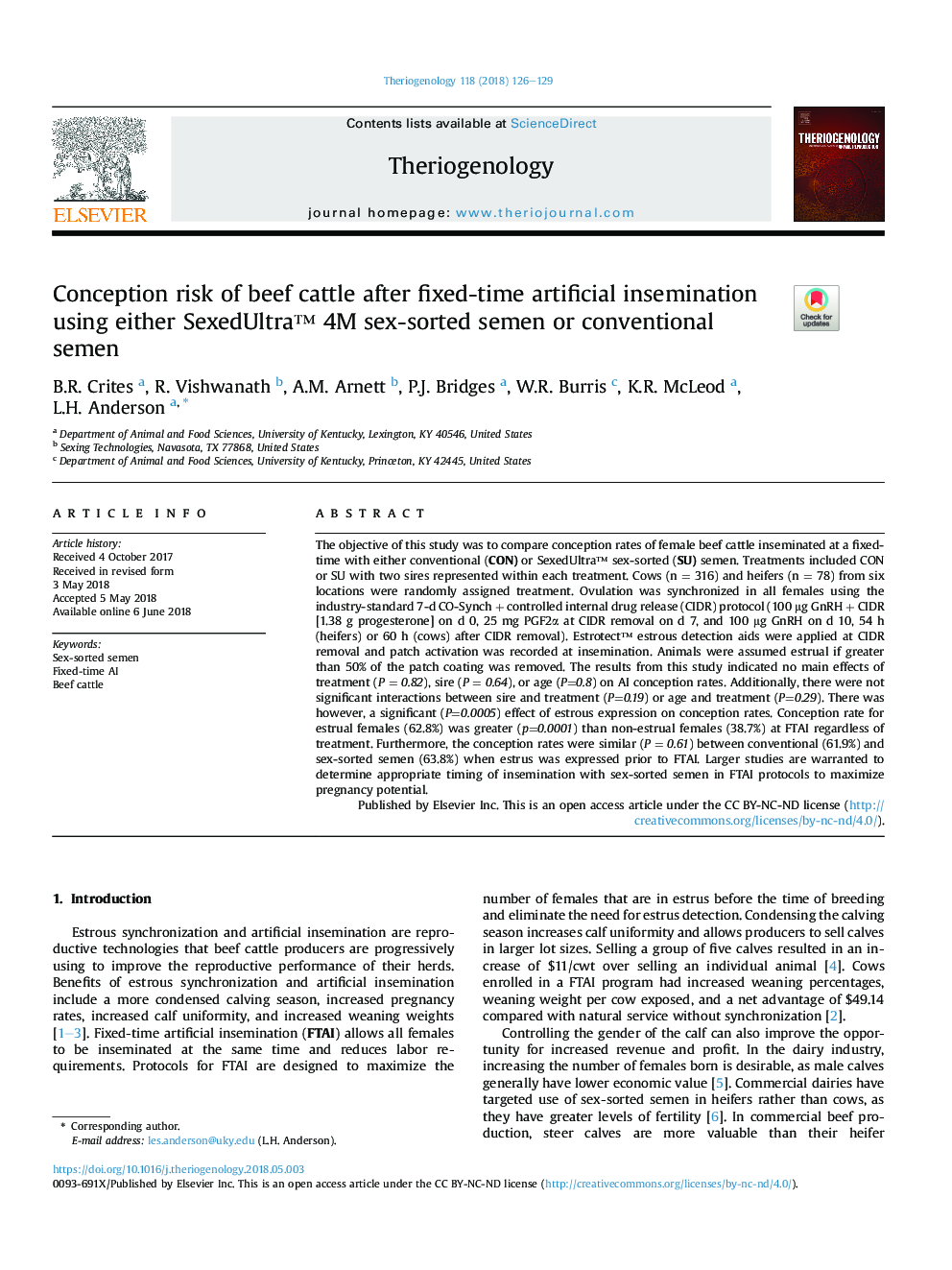| Article ID | Journal | Published Year | Pages | File Type |
|---|---|---|---|---|
| 8426357 | Theriogenology | 2018 | 4 Pages |
Abstract
The objective of this study was to compare conception rates of female beef cattle inseminated at a fixed-time with either conventional (CON) or SexedUltra⢠sex-sorted (SU) semen. Treatments included CON or SU with two sires represented within each treatment. Cows (n = 316) and heifers (n = 78) from six locations were randomly assigned treatment. Ovulation was synchronized in all females using the industry-standard 7-d CO-Synch + controlled internal drug release (CIDR) protocol (100 μg GnRH + CIDR [1.38 g progesterone] on d 0, 25 mg PGF2α at CIDR removal on d 7, and 100 μg GnRH on d 10, 54 h (heifers) or 60 h (cows) after CIDR removal). Estrotect⢠estrous detection aids were applied at CIDR removal and patch activation was recorded at insemination. Animals were assumed estrual if greater than 50% of the patch coating was removed. The results from this study indicated no main effects of treatment (P = 0.82), sire (P = 0.64), or age (P=0.8) on AI conception rates. Additionally, there were not significant interactions between sire and treatment (P=0.19) or age and treatment (P=0.29). There was however, a significant (P=0.0005) effect of estrous expression on conception rates. Conception rate for estrual females (62.8%) was greater (p=0.0001) than non-estrual females (38.7%) at FTAI regardless of treatment. Furthermore, the conception rates were similar (P = 0.61) between conventional (61.9%) and sex-sorted semen (63.8%) when estrus was expressed prior to FTAI. Larger studies are warranted to determine appropriate timing of insemination with sex-sorted semen in FTAI protocols to maximize pregnancy potential.
Related Topics
Life Sciences
Agricultural and Biological Sciences
Animal Science and Zoology
Authors
B.R. Crites, R. Vishwanath, A.M. Arnett, P.J. Bridges, W.R. Burris, K.R. McLeod, L.H. Anderson,
